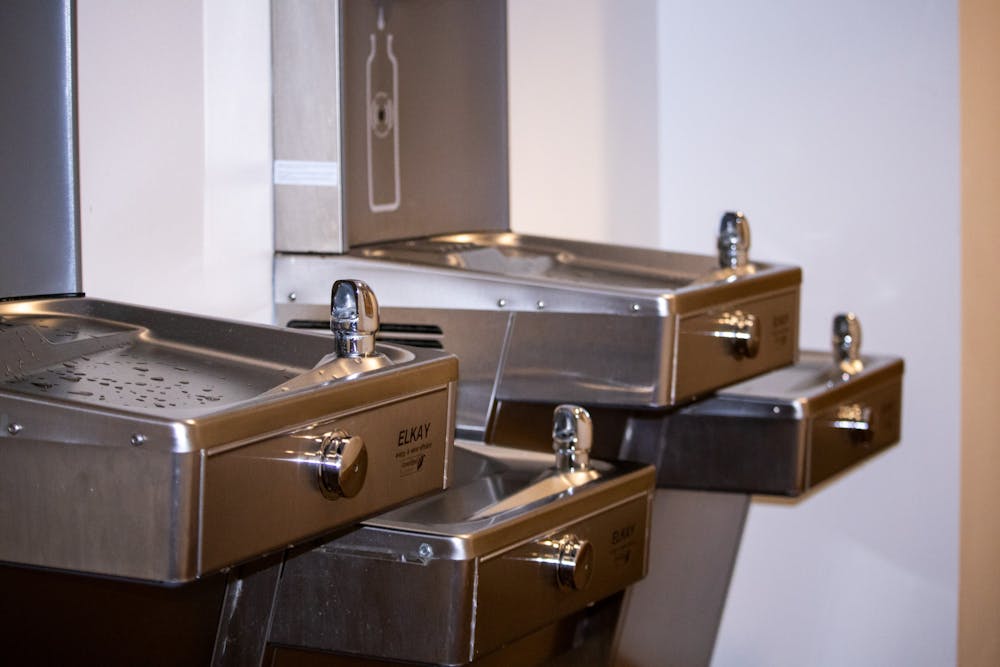By Myara Gomez
Staff Writer
The campus is no longer receiving water deliveries to several faculty buildings, which contained five-gallon water jugs for office water stations. In an effort to increase sustainability, the company was asked not to drive into campus due to pollution and carbon emissions.
“The goal was to reduce delivery truck traffic in the middle of campus,” said Vice President for Operations Sharon Blanton. “The trucks increased danger and pollution to the campus center. We enforced a rule stating that handtrucks had to be used in the interior of campus. The vendor chose to not comply with our rules.”
These buildings that are no longer receiving water deliveries are being encouraged to use one of the 56 “hydration stations” on campus.
Blanton said that deliveries to the buildings on the interior of campus stopped around March or April. Subsequently, the contract with the water company was terminated. When asked the name of the water company, both Senior Director of Sustainability and Energy Management Paul Romano and Blanton said either they “don’t know” or “don’t recall.”
Senior Director of Sustainability and Energy Management Paul Romano said the College saves an average of 870 bottles a week for each hydration station.
“In our case 870 bottles per week x 52 weeks x 51 bottle filling stations result in the reduction of 2,307,240 bottles. This does not only represent a reduction in plastic waste but the energy required to manufacture and distribute these bottles,” Romano said.
These hydration stations have had a positive impact on the campus and Romano mentioned that they plan to install even more. However, this will take several years to complete because it involves replacing current hydration stations and installing new ones.
“They are convenient since they’re on the first floor of most buildings,” said senior psychology major Rob Mitten. “I wish there were more though.”
Overall, these hydration stations are saving the campus money and are helping to reduce the College’s carbon footprint. This is due to reduced levels of carbon emissions from the trucks as well as reducing the amount of plastic.
“Transporting water to campus in bottles, regardless of size, is not sustainable,” Romano said.







